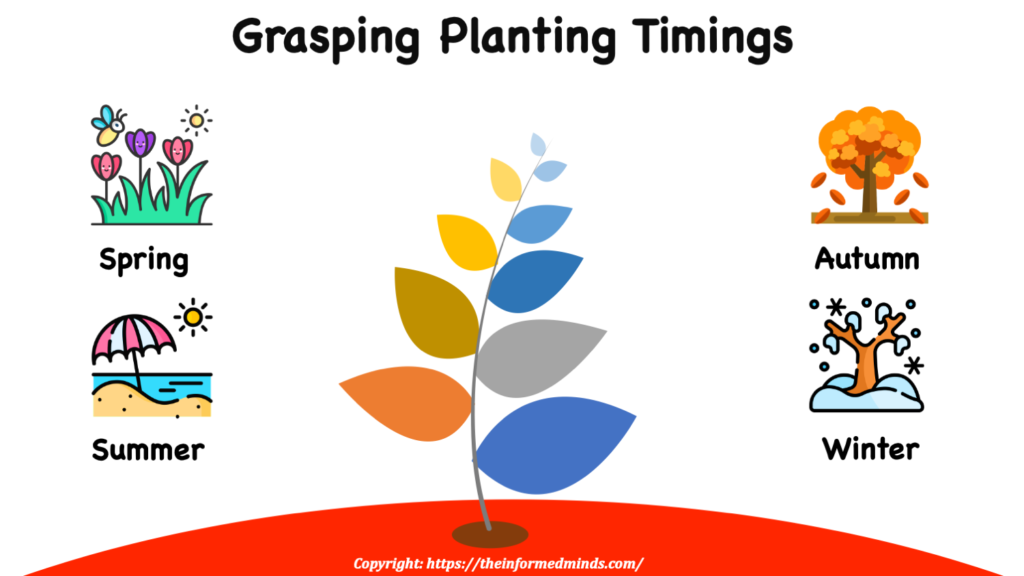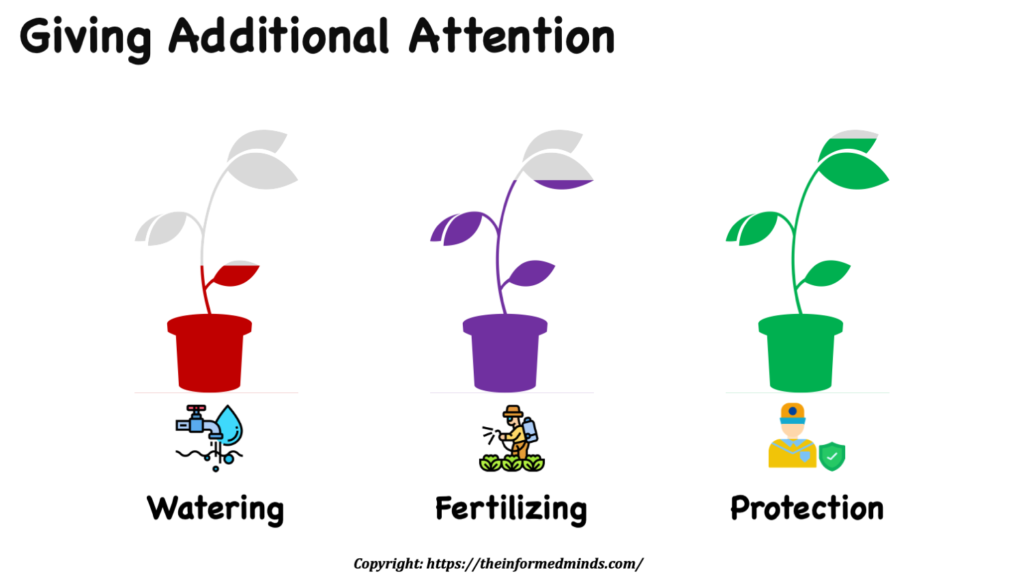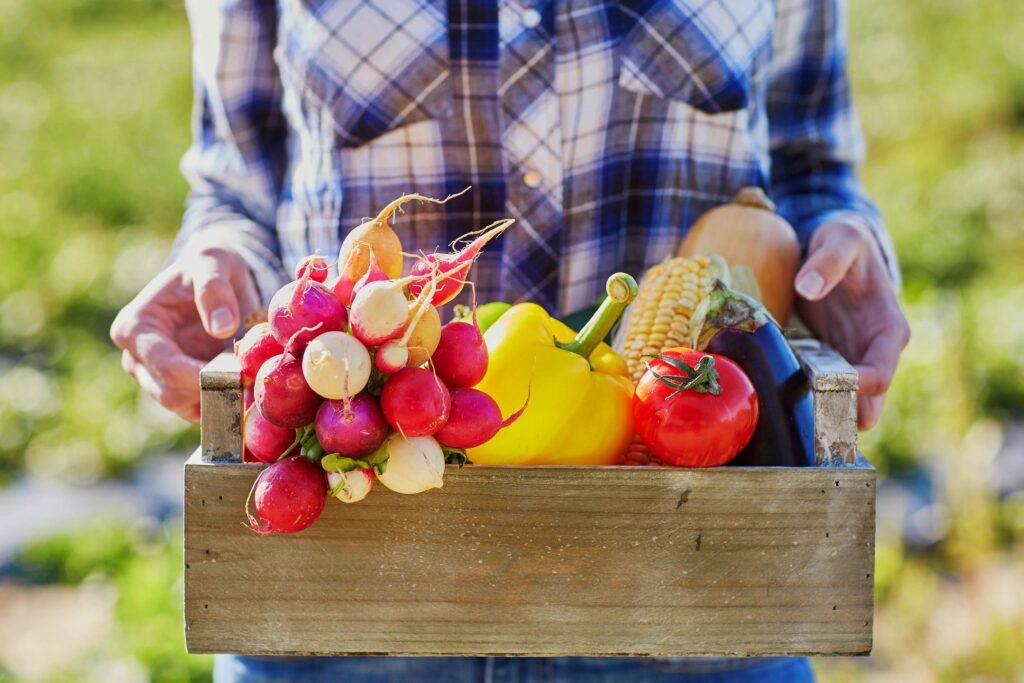Planting the right plants at the right time is crucial for a successful garden. Planting in the wrong season can lead to poor growth, low yield, and even plant death. So, what can you do if you find yourself planting in the wrong season? Let’s explore some solutions and strategies to help you rectify this common gardening mistake.
1) Understanding Planting Seasons
Knowing when to plant specific types of plants is fundamental for gardening success. Here’s a breakdown of the typical planting seasons:

1.1 Spring
Ideal Plants: Most vegetables, annual flowers, and herbs thrive when planted in spring.
Why Spring: Spring offers moderate temperatures and ample sunlight, creating optimal conditions for plant growth and development.
1.2 Summer
Ideal Plants: Heat-loving plants such as tomatoes, peppers, eggplants, and melons are best planted in summer.
Why Summer: These plants require warmer temperatures to germinate and grow, making summer the perfect season for planting.
1.3 Autumn
Ideal Plants: Perennials, trees, shrubs, and cool-season vegetables like broccoli and kale are best planted in autumn.
Why Autumn: Cooler temperatures and adequate rainfall in autumn allow plants to establish strong root systems before winter.
1.4 Winter
Ideal Plants: Bare-root trees, shrubs, and certain bulbs like tulips and daffodils can be planted in winter.
Why Winter: Dormant plants or those with bare roots can be safely transplanted during winter when they are less susceptible to transplant shock.
2) Solutions to Planting in the Wrong Season

2.1 Transplanting
Transplanting is a technique used to move plants from one location to another, either to a different spot in the garden or into containers. This can be an effective solution if you realize you’ve planted in the wrong season.
Transplanting Tips
- Watering: Before transplanting, water the plant thoroughly to hydrate the roots and reduce transplant shock.
- Location: Choose a new planting location with similar sunlight, soil type, and drainage conditions to ensure the plant adapts well.
- Handling: Handle the plant gently during transplanting to minimize root damage, and ensure the plant’s root ball remains intact.
2.2 Providing Extra Care
Plants that are planted in the wrong season may require additional care to help them survive and thrive until the correct planting season arrives.
Watering
- Importance: Proper watering is essential to maintain soil moisture levels and prevent dehydration, especially during hot or dry periods.
- Tips: Water deeply and infrequently to encourage deep root growth, and use mulch to retain soil moisture.
Fertilizing
- Importance: Fertilizers provide essential nutrients that plants need for growth, flowering, and fruiting.
- Tips: Use a balanced fertilizer with equal amounts of nitrogen, phosphorus, and potassium, and apply according to package instructions to avoid over-fertilization.
Protection
- Importance: Protecting plants from extreme temperatures, pests, and diseases can help reduce stress and promote healthy growth.
- Tips: Use organic mulch or row covers to insulate plants from cold temperatures, and monitor for signs of pest infestations or diseases regularly.
2.3 Extending or Delaying Harvest
For plants that have been planted in the wrong season, adjusting the harvest time can sometimes help salvage the crop.
Harvesting Tips
- Monitoring: Regularly monitor the plant’s growth and development to determine the optimal harvest time.
- Adjusting: If necessary, adjust the harvest time by extending or delaying it based on the plant’s condition and maturity level.
- Storage: Once harvested, store fruits and vegetables in a cool, dry place to maintain freshness and prolong shelf life.
3) Preventing Future Mistakes
To avoid planting in the wrong season in the future, proactive planning and research are key.

3.1 Research
- Importance: Understanding the specific planting seasons for different plants can help you plan and schedule your gardening activities more effectively.
- Tips: Consult gardening books, websites, or local extension offices for reliable information on planting times for various plants.
3.2 Planning
- Importance: Creating a planting schedule or calendar can help you organize your gardening tasks and ensure you plant at the right time.
- Tips: Use a planner or digital calendar to track planting dates, seed starting times, and harvest schedules for each plant type.
3.3 Consult Experts
- Importance: Seeking advice from experienced gardeners, local nurseries, or gardening experts can provide valuable insights and recommendations tailored to your specific growing conditions.
- Tips: Attend gardening workshops, join gardening clubs or online forums, and participate in community events to connect with knowledgeable individuals and learn from their experiences.
Conclusion
Planting in the wrong season can be a common mistake for gardeners, but with the right solutions and strategies, it can be rectified. Whether it’s through transplanting, providing extra care, adjusting harvest times, or improving future planning, there are ways to overcome this challenge and ensure the health and vitality of your plants. By understanding planting seasons, implementing the appropriate solutions, and proactively planning and researching, you can cultivate a successful garden year-round.
Frequently Asked Questions
Q1. What is the most common mistake of first-time gardeners?
A: The most common mistake of first-time gardeners is often overwatering or underwatering their plants. It’s essential to find the right balance to ensure optimal growth and avoid root rot or dehydration.
Q2. What is the ideal planting season?
A: The ideal planting season varies depending on the type of plant. Generally, spring is considered the ideal planting season for most vegetables, flowers, and herbs due to moderate temperatures and ample sunlight.
Q3. What month should I plant my vegetable garden?
A: In most regions, vegetable gardens are typically planted in spring, around March to May, when the soil has warmed up and the risk of frost has passed. However, specific planting times can vary based on your location and the type of vegetables you plan to grow.
Q4. What is a good layout for a vegetable garden?
A: A good layout for a vegetable garden often includes raised beds or rows with pathways between them for easy access. Grouping plants with similar water, sunlight, and nutrient requirements together can help optimize space and yield.
Q5. What is the hardest thing about gardening?
A: One of the hardest things about gardening can be dealing with unpredictable weather, pests, and diseases that can affect plant health and productivity. Additionally, maintaining consistent care and attention to plants’ needs throughout the growing season can be challenging.
Q6. Why do gardeners cut the tip of the plant?
A: Gardeners often prune or trim the tips of plants to encourage bushier growth, stimulate new growth, and improve overall plant shape and appearance. This practice can also help redirect energy towards fruit or flower production.
Q7. What is the best planting pattern?
A: The best planting pattern often depends on the size and shape of your garden, as well as the types of plants you are growing. Some common planting patterns include square foot gardening, companion planting, and alternating rows or blocks.
Q8. What is the easiest vegetable to grow?
A: Some of the easiest vegetables to grow for beginners include tomatoes, lettuce, radishes, and cucumbers. These plants are generally low-maintenance and can thrive in a variety of growing conditions.
Q9. What season do plants grow fastest?
A: Plants typically grow fastest during the spring and summer months when temperatures are warmer, and daylight hours are longer, providing optimal conditions for photosynthesis and growth.
Q10. Is it too late to plant vegetables in May?
A: In many regions, May can still be a suitable time to plant vegetables, especially warm-season crops like tomatoes, peppers, and squash. However, it’s essential to check your local climate and frost dates to determine the best planting times for specific vegetables.
Q11. What grows well together in a vegetable garden?
A: Companion planting involves pairing plants that benefit each other by attracting pollinators, repelling pests, or improving soil health. Some examples of compatible plant combinations include tomatoes and basil, carrots and onions, and corn and beans.
Q12. What vegetables can I plant in June?
A: In June, you can plant a variety of warm-season vegetables like beans, corn, cucumbers, peppers, squash, and tomatoes. It’s essential to choose vegetables that have a shorter growing season to ensure a successful harvest before the first frost in the fall.
Q13. What should you not plant near tomatoes?
A: Tomatoes are sensitive to certain plants, including potatoes, peppers, and eggplants, as they can attract similar pests and diseases. It’s best to avoid planting these vegetables near tomatoes to prevent potential problems and ensure healthy growth.
Q14. Is it better to plant vegetables in rows or groups?
A: Both planting in rows and groups have their advantages. Planting in rows can help optimize space and facilitate easier maintenance, while grouping plants with similar requirements can create microclimates that promote growth and yield. Ultimately, the best approach depends on your garden’s size, shape, and specific needs.

